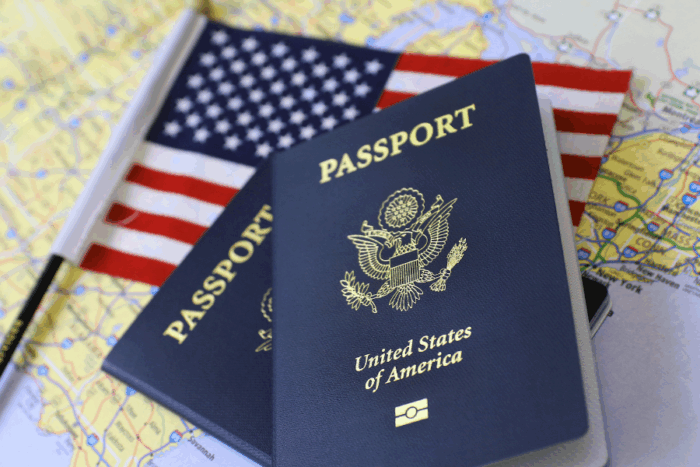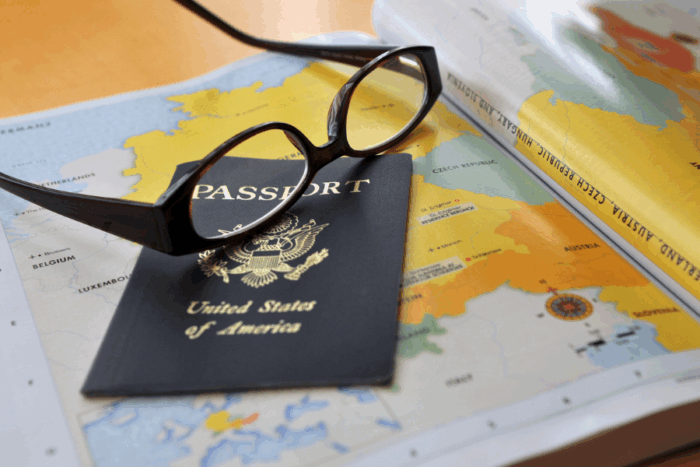Visa-Free Countries for US Visa and Green Card Holders
July 14, 2025
For high-net-worth entrepreneurs, global mobility is more than a luxury; it’s a necessity.
As a US visa or Green Card holder, you enjoy the privilege of being able to travel to numerous countries without the hassle of securing additional visas.
Imagine the convenience: jetting off for business deals, scouting new investment opportunities, or sneaking in a leisure getaway – all without the red tape.
While specific entry requirements vary, Green Card holders generally enjoy visa-free or visa-on-arrival benefits in many popular destinations.
Whether it’s for business or pleasure, knowing where you can go visa-free puts you a step ahead in the game of global success.
This guide is your ticket to understanding which destinations roll out the red carpet for you.
We will list the top visa-free countries where your US visa or Green Card opens doors and answer some of the most common questions we receive from US Green Card holders travelling outside of the United States.
US Visa vs. US Green Card
Not all countries extend the privilege of visa-free travel to US Green Card holders.
A US visa is a travel permit that authorises foreign nationals to enter the United States for a specific purpose and duration.
There are various types of US visas, such as tourist visas, student visas, work visas and more.
Most visas are split into two distinct types, namely, non-immigrant and immigrant visas.
- Temporary non-immigrant US visas are for short-term stays in the US and do not offer an option to obtain a US Green Card.
- An immigrant visa, like the EB-5 visa, grants permanent residency in the United States through a Green Card.
To obtain a non-immigrant US visa, applicants must show that they intend to return to their home country after their authorised stay.
They must also present evidence of financial means to support themselves during their stay and meet any other requirements specific to the visa type.
In contrast, immigrant visas typically have different requirements, each unique to its own group of related visas (we’ll walk through these soon).
A US Green Card, also known as a Permanent Resident Card, allows a holder to live in the United States and enjoy many of the benefits that US residents enjoy.
Unlike a visa, a Green Card does not have an expiration date and permits the holder to live and work in the US indefinitely, as long as they abide by their legal status.
You will have to renew it every ten years, however.
Obtaining a US Green Card is a complicated and time-consuming process that can take a few months to five years, depending on the chosen route.
The most common pathways to a Green Card include family-based immigration, employment-based immigration or other special immigration programs.
Visa-Free Countries for US Green Card Holders

A US Green Card gives you many benefits, including visa-free, visa-on-arrival or eTA (Electronic Travel Authorisation) travel to around 40 countries.
Unfortunately, it is not possible to make a complete list of all countries that don’t require visas, visa-on-arrival or eTA for US Green Card holders.
This is because:
- Immigration policies and visa requirements are subject to frequent updates
- Besides Green Card status, factors like passport type can also affect your entry requirements.
That said, US Green Card holders can travel to a number of countries without needing a visa, though specific requirements and restrictions may apply.
Some popular destinations include Canada, Mexico, and various Caribbean and Central American nations. Additionally, certain countries in South America, Europe and the Middle East offer visa-free entry or visa-on-arrival options for Green Card holders.
Which US Visas Give You a Green Card?
The United States has two main immigration visa categories: employment-based and family-based.
Employment-Based Immigration Visas
The US offers various work-based immigration visas, also known as EB visas, for foreigners who want to become permanent residents based on their skills, abilities and investments.
There are five EB visa subcategories, each with its own specific requirements, such as job offers, labour certifications and investment amounts, which must be met to qualify.
Applicants may also need to show they have a firm grasp of the English language, pass medical tests and undergo background checks.
EB-1: Priority Workers
The EB-1 visa is for people who are exceptionally skilled in fields like science, art, education, business or sports, as well as top professors, researchers and executives.
To qualify for this visa, applicants must demonstrate sustained national or international acclaim, exceptional achievements in their field and meet rigorous criteria.
EB-2: Professionals with Advanced Degrees or Exceptional Ability
The EB-2 visa category is designed for foreign nationals who hold advanced degrees (a bachelor’s degree or higher) or possess exceptional ability in their field of expertise.
For the advanced degree category, applicants must have five years of work experience in their field of study.
Applicants using this category must have at least three years of experience in their field and prove their outstanding abilities.
EB-3: Skilled Workers, Professionals and Unskilled Workers
The EB-3 visa category encompasses three subcategories: skilled workers, professionals and other workers. Skilled workers must have at least two years of experience in their field, while professionals must hold a US bachelor’s degree or a foreign equivalent.
The unskilled subcategory is for foreign nationals capable of performing unskilled labour that is not seasonal or temporary.
EB-4: Special Immigrants
The EB-4 visa category is reserved for specific types of immigrants, like religious workers, employees of US foreign service posts, translators for the US armed forces and others as defined by immigration laws.
EB-5: Investors
The EB-5 Immigrant Investor Program offers permanent residency to foreign nationals who invest a substantial amount of capital in a new commercial enterprise that creates or preserves at least 10 full-time jobs for US workers.
The amount is typically US$1,050,000 or US$800,000 in a specified employment area or development project.
Many wealthy individuals who want to get a Green Card through investing are drawn to this type of visa, as it offers the benefits of residency without the obligations of citizenship.
Family-Based Immigration Visas
Family-based immigration visas assist close relatives of US citizens and permanent residents to obtain a Green Card. These visas are divided into two subcategories: immediate relative visas and family preference visas.
Immediate relative visas are for close relatives of US citizens.
These visas include:
- IR1 and CR1 for spouses
- IR2 for children
- IR5 for parents.
Family preference visas are for non-direct family members of a US citizen or relatives of a lawful permanent resident.
These visas include:
- F1 visas for unmarried children who are 21 years of age or older
- F3 visas for married children
- F4 visas for siblings.
Spouses and unmarried children of lawful permanent residents (Green Card holders) may use these visas:
- F2A visas for spouses and unmarried children under the age of 21
- F2B visas for unmarried children who are 21 years of age or older.
While there is an unlimited amount of visas available for immediate relative visas, those who fall into the family preference category need to be aware that there is a cap on the number issued each year.
Other Immigration Visa Options
While less common, there are a few other visas that can lead to a Green Card:
- Diversity Visa: A lottery program for countries with low US immigration rates.
- Refugee and Asylum Status: For those who fear persecution in their home country.
- Special Programs: Such as visas for certain nationals (e.g. Cubans, Liberians), religious workers, broadcasters and more.
Travel Tips for US Green Card Holders

Holding a US Green Card can help you travel to many countries visa-free. To enjoy a smooth journey there and back, we want to bring to light two tips to keep in mind.
Documentation Essentials
In order to gain entry into the visa-free countries you wish to visit using your Green Card, you’ll want to carry the following documents:
- Valid passport
- Green Card
- Additional identification, such as a driver’s license or other government-issued ID
- Some countries may require evidence of financial resources for your trip
- Some countries may also require travel insurance and might request proof.
Re-entry Permits
If you plan to be outside the United States for an extended period (more than six months), consider applying for a re-entry permit (Form I-131).
This document serves as proof of your intention to come back to the US and will assist with the process of re-entering the country smoothly.
Alternative Residency Options with Visa-Free Travel Benefits
If you’re looking for more freedom to travel abroad, a few other residency programs are even better than the US Green Card.
Some of these give you access to a stronger passport and lower tax rates, along with unique lifestyle benefits not found in the US.
One option to improve your international mobility is residence and citizenship by investment programs, sometimes called Golden Visas.
Portugal’s Golden Visa program, for example, grants residency rights and the potential for eventual citizenship to those investing in qualifying investment funds.
Several other countries offer residency through investment:
- Greece offers residency for property investments starting from €250,000.
- Cyprus requires an investment of €300,000 or more.
- Malta offers residency through various investment options, including property, government bonds and fund contributions.
- Italy requires significant investments in government bonds, start-ups or donations.
Another option is to obtain a second passport through a citizenship-by-investment program.
Places like St Kitts and Nevis, Antigua and Barbuda and Dominica permit you to become a citizen if you make an economic contribution, usually by investing in real estate or donating to the government.
With a second passport from these nations, you can enjoy visa-free, visa-on-arrival or eTA travel to over 140 countries, including the Schengen Area, the United Kingdom and Singapore.
Beyond traditional investment-based programs, some countries offer residency options based on remote work or self-employment:
- The United Arab Emirates‘ new Remote Work Visa permits professionals to live and work in Dubai while employed by companies abroad.
- Portugal’s D7 Visa caters to remote workers, freelancers and entrepreneurs, opening a pathway to residency and the associated travel benefits.
As you explore these alternative residency pathways, it’s best to look at factors like investment requirements, processing times and long-term goals.
Working with our experienced professionals at Nomad Capitalist can help you deal with difficult issues and identify the best solution for your unique needs.
Visa-Free Countries for US Visa and Green Card Holders: FAQs
Green Card holders can not automatically visit Japan without a visa. The visa waiver program for Japan is based on nationality, not residency status.
Not all US Green Card holders can travel to Germany without a visa, as it is based on current nationality, not residency status. US citizens, however, can travel to Germany and other Schengen countries for up to 90 days within 180 days without a visa.
Yes, US Green Card holders can travel to Canada for up to six months without a visa as long as they have a valid Green Card and a passport from their country of citizenship. However, air travellers may require an eTA.
A US Green Card holder can enjoy visa-free or visa-on-arrival access to many countries, particularly North America (Canada, Mexico) and several other countries in Asia and South America.
No, US citizens can travel to Taiwan for up to 90 days without a visa for tourism or business purposes.
US Green Card holders require a visa on arrival to visit Dubai and the United Arab Emirates.
Get the Most out of Your Residency
As a US Green Card holder, you are granted visa-free travel to numerous countries, including Canada, Mexico and various countries throughout the Balkans and the Caribbean.
To explore even more global opportunities, however, you may need to look beyond the United States and your Green Card status.
To truly unlock global mobility and diversify your legal residency options, you could consider pursuing a second residence or citizenship.
At Nomad Capitalist, we help people create a complete offshore plan that includes more than just visa-free travel.
Our team of experts can guide you through the process of obtaining a second passport or residency in a jurisdiction that aligns with your personal and professional goals.
If you want to lower your taxes, protect your assets, or have more freedom and flexibility in your life, owning a second home or acquiring citizenship can make all the difference.
Don’t settle for temporary visa-free travel when you can establish a permanent foothold in another country.
Get in touch today and let our experienced team devise and implement a strategy so you can ‘go where you’re treated best’.



How To Get the Portugal Startup Visa in 2025: Rules, Benefits, and Costs
The Portugal Startup Visa is a residency program for non-EU citizens who want to bring innovative business ideas to Portugal. The program is suitable for tech-driven companies and has no minimum investment requirements, which makes it appealing to international entrepreneurs. In this guide, we’ll explore the Portugal Startup Visa and cover: What Is the Startup […]
Read more

Portugal Residency Requirements: Eligibility and Application Process Explained
Portugal allows foreigners to obtain residency permits and live in the country for an extended period. Depending on the type of visa, foreigners can secure temporary or permanent residence and eventually apply for Portuguese citizenship. In this guide, we will outline the Portugal residency requirements for expats, focusing on the following: Obtaining Portuguese Residency: An […]
Read more

Portugal Entrepreneur Visa: Benefits, Requirements, and Application
If you wish to relocate your business to Portugal or start a new one in the country, obtaining the Portugal Entrepreneur Visa (also known as the D2 Visa) is among the first steps you should take. To help you complete the process as effortlessly as possible, this guide will cover: What Is the Portugal D2 […]
Read more




